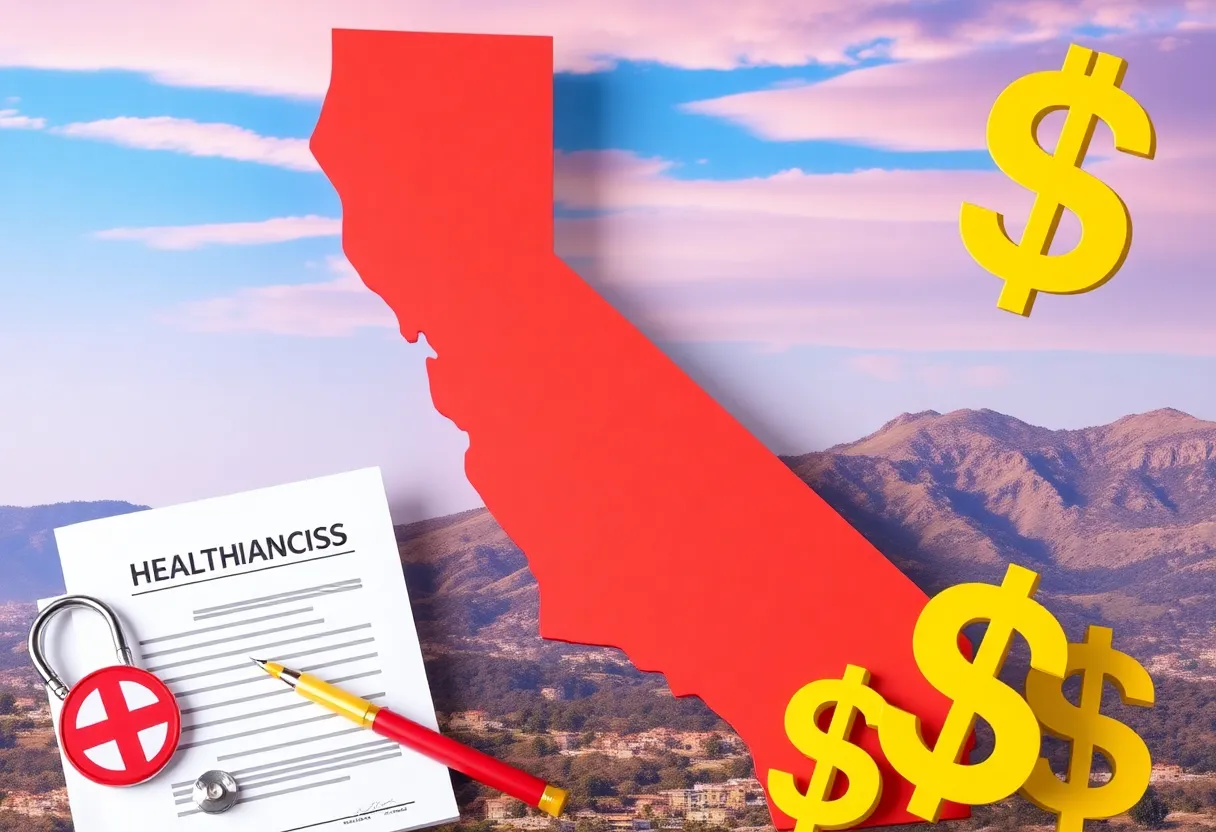California, September 27, 2025
News Summary
California is on the brink of a health insurance crisis as the government shutdown approaches, threatening to double insurance costs for many residents. The impending expiration of federal insurance subsidies has sparked a debate in Congress, with Democrats pushing for extensions and Republicans favoring a temporary funding bill. Without these subsidies, it’s estimated that up to 400,000 individuals could leave the insurance marketplace, which would significantly impact access to affordable healthcare in a state that has worked hard to expand coverage.
California is facing a potential health insurance crisis as a government shutdown looms, which could severely impact the state’s health insurance market. The conflict in Washington centers around soon-to-expire insurance subsidies. Democrats are advocating for an extension, while Republicans have proposed a “clean” stopgap funding bill. The expiration of these subsidies would likely lead to a doubling of insurance costs in California, putting coverage in jeopardy for hundreds of thousands of residents.
As highlighted by Martha Santana-Chin, CEO of L.A. Care, many individuals may find it unaffordable to sustain their insurance coverage if prices increase significantly. This situation is critical for California, which has worked on expanding access to health coverage for more than a decade.
Congress must take action by the end of the year to reauthorize funding for these subsidies. The decisions made in the upcoming week will have a direct influence on prices for consumers preparing to shop for policies this October. Jessica Altman, executive director of Covered California, is making preparations for two potential scenarios regarding open enrollment: one contingent on the extension of subsidies and another where such extensions are not realized.
According to Altman, without the subsidy extensions, monthly premiums could potentially double, causing as many as 400,000 individuals to exit the insurance marketplace—a dropout rate that could represent nearly 25% of total enrollees in California.
The state has set aside $190 million to assist with health insurance funding gaps, primarily aimed at aiding low-income consumers if tax credits expire. However, this fund is significantly less than the estimated $2.5 billion loss California would incur if these tax credits disappear. Nearly 90% of individuals enrolled in Covered California receive some form of financial assistance, which has historically been crucial for maintaining insurance coverage levels. The potential loss of this assistance could lead to heightened rates of dropout, particularly among younger and healthier enrollees.
Compounding these challenges are anticipated changes stemming from a Republican megabill, which could result in increased administrative burdens and eligibility issues for immigrants. Ongoing negotiations about subsidy extensions are occurring in Washington, with Republicans preferring to address this issue closer to year-end rather than during ongoing shutdown discussions.
Democratic lawmakers are leveraging the urgency of securing health care funding as part of the negotiations for broader government funding. They are focusing specifically on areas with high concentrations of Covered California enrollees. Covered California has proactively started notifying consumers regarding potential changes and the uncertainty surrounding health coverage costs.
Average premiums in the state are projected to increase by 10% this year, marking the first time in nearly a decade that rates have experienced a double-digit rise—this increase is largely attributed to fluctuating health care costs and uncertainty. Should the enhanced premium tax credits expire at the end of 2025, California may face even steeper price hikes in 2026, with projections indicating an average net premium increase of 66% that could impact approximately 1.7 million enrollees.
The proposed average premium increase of 10.3% for 2026 in California remains lower than the national average of 20%, demonstrating varied premium increases across states. Various factors are driving these increases, including inflation, rising labor and health care costs, and greater demand for prescription medications.
Experts emphasize the significant challenges related to impending subsidy expirations and the alterations in enrollment processes, which could escalate overall premiums, particularly affecting low-income beneficiaries. Healthcare professionals caution that increasing insurance rates could pose substantial economic and health risks for those who may lose coverage. The urgency for Congressional action to extend subsidies is evident in its potential to alleviate financial hardships for American families.
FAQ
What could happen if the insurance subsidies in California expire?
Without subsidy extensions, Altman predicts monthly premiums in California could double, leading to as many as 400,000 individuals dropping out of the insurance marketplace.
How many individuals in California rely on financial assistance for health insurance?
Nearly 90% of Covered California enrollees receive some form of financial assistance.
What is the estimated financial loss for California if tax credits vanish?
The estimated loss for California would be $2.5 billion if tax credits expire.
What happens if the enhanced premium tax credits expire at the end of 2025?
The impending expiration of enhanced premium tax credits at the end of 2025 is set to cause further price increases in 2026, with 1.7 million enrollees potentially facing a 66% average net premium increase.
Key Features of the Potential Health Insurance Crisis in California
| Feature | Details |
|---|---|
| Potential Premium Increase | Insurance costs could double if subsidies expire. |
| Projected Dropouts | Up to 400,000 individuals may leave the marketplace. |
| Financial Assistance | Nearly 90% of enrollees receive financial assistance. |
| Projected Losses | California could face a $2.5 billion loss without tax credits. |
| Upcoming Changes | Enrollment processes may become more complicated. |
Deeper Dive: News & Info About This Topic
- Politico: California Braces for a Health Insurance Meltdown
- Wikipedia: Health Insurance in the United States
- Newsweek: Californians Warned of Devastating New Health Insurance Costs
- Google Search: California Health Insurance Costs
- San Francisco Chronicle: Covered California Premium Increase
- Encyclopedia Britannica: Health Care
- Covered California: Important Changes
- Google News: California Health Insurance News
- Fresno Bee: Opinion on Health Insurance in California

Author: STAFF HERE HUNTINGTON BEACH
The Huntington Beach Staff Writer represents the experienced team at HEREHuntingtonBeach.com, your go-to source for actionable local news and information in Huntington Beach, Orange County, and beyond. Specializing in "news you can use," we cover essential topics like product reviews for personal and business needs, local business directories, politics, real estate trends, neighborhood insights, and state news affecting the area—with deep expertise drawn from years of dedicated reporting and strong community input, including local press releases and business updates. We deliver top reporting on high-value events such as the Huntington Beach Surf City USA Marathon, the U.S. Open of Surfing, Fourth of July celebrations at the Huntington Beach Pier, and community festivals at Huntington Beach Central Park. Our coverage extends to key organizations like the Huntington Beach Chamber of Commerce and Visit Huntington Beach, plus leading businesses in retail, hospitality, and outdoor recreation that drive the local economy. As part of the broader HERE network, including HEREAnaheim.com, HERECostaMesa.com, HERESantaAna.com, and HERELosAngeles.com, we provide comprehensive, credible insights into Southern California's dynamic landscape.





